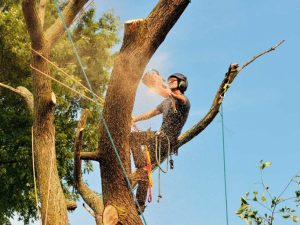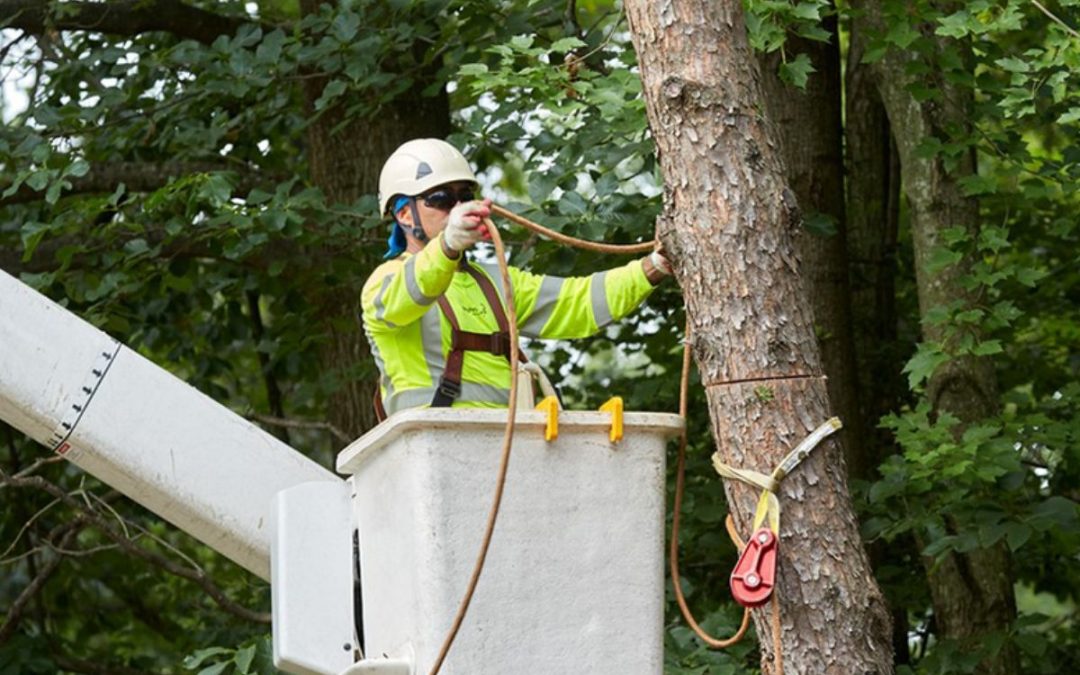Let’s face it, trees are big. They can live for centuries, and some species grow to be over 100 feet tall. With all that size comes a lot of responsibility. That’s why there’s a profession dedicated to their care: arboriculture. Arborists are trained professionals who understand the science behind tree growth and pruning. They also know how to spot potential problems, like disease or pests, and take steps to mitigate those risks.
Becoming an arborist is a great way to combine your love of nature with your desire to help others. As a certified arborist, you’ll be able to work with homeowners and businesses to ensure that their trees are healthy and look great. Plus, you’ll have the satisfaction of knowing that you’re helping to preserve some of our planet’s most important resources.
If you’re thinking about becoming an arborist, here’s what you need to know.
1. Get a Degree in Arboriculture or Forestry
A degree in arboriculture or forestry can lead to a fulfilling and exciting career in the environmental sector. If you love being outdoors, working with your hands, and making a difference, then this could be the perfect field for you. Here’s everything you need to know about getting a degree in arboriculture or forestry.
What Is Arboriculture?
Arboriculture is the science and art of caring for trees. It involves everything from planting and watering young trees to pruning and felling mature trees. Arboriculturists work in a variety of settings, including parks, gardens, woodlands, and commercial properties. They may also work for local councils or private companies that manage large estates.
What Is Forestry?
Forestry is the management of woods and forests. It includes everything from planting and nurturing young trees to felling mature trees and managing wildlife habitats. Foresters often work in conjunction with other environmental professionals, such as ecologists, to ensure that woodland ecosystems are healthy and sustainable.
How Do I Get a Degree in Arboriculture or Forestry?
There are many ways to get a degree in arboriculture or forestry. You can study for traditional qualifications at a college or university, or you could opt for an apprenticeship or traineeship if you prefer a more hands-on approach. There are also many short courses available that can help you get started in the industry without committing to a full degree course.

2. Complete an Internship or Apprenticeship
If you’re not familiar with the term, arboriculture is the cultivation, management, and study of trees and other woody plants. That includes everything from tree planting and pruning to tree removal and stump grinding. As an arborist, you could work for a tree-care company, a municipality, or even as a self-employed contractor.
There are a couple of different ways to get started in arboriculture. One option is to complete an internship or apprenticeship with a tree-care company. This is a great way to learn the ropes and get some experience under your belt. You’ll also get paid (usually minimum wage) while you’re learning.
Another option is to complete a certificate or diploma program at a college or trade school. These programs usually take one or two years to complete, and they’ll give you a more formal education in topics like plant science, tree biology, and risk management.
No matter which route you choose, it’s important that you have a passion for the work. Arboriculture can be tough physically – it’s not uncommon to be working long hours outdoors in all kinds of weather – so it’s important that you love what you do.
3. Get Certified
Tree care is a specialized field that requires training and certification. arborists are tree experts who have the knowledge and skills to provide proper care for trees. Homeowners and tradesmen can get certified in arboriculture through many different programs.
Ongoing Training
There are many different ways to get certified in arboriculture. The Tree Care Industry Association (TCIA) offers an online training program called the Tree Care Academy. This program offers courses on a variety of topics, including tree biology, tree identification, pruning, and tree risk assessment. Upon completion of all four courses, participants will receive a Certificate of Completion from the Tree Care Academy.
The International Society of Arboriculture (ISA) also offers an online Arborist Certification Program. This program consists of four exams on topics such as safety, tree ID, and climbing/pruning. Participants must pass all four exams within one year in order to receive ISA Certification.
Local Community Colleges
Many community colleges offer certificate or degree programs in arboriculture or horticulture with a focus on trees. These programs generally take two years to complete and often include an internship component. Students can expect to take courses in tree biology, dendrology, Plant Pathology, Soil Science, Entomology, ecology, Anatomy & Physiology. Successful completion of these programs will result in a certificate or degree in arboriculture from the community college.
Professional Development Hours
Professional development hours (PDHs) are required for registered professional engineers and landscape architects in order to maintain their professional licenses. Many arborists provide PDH-eligible seminars and workshops on various topics related to tree care. Participation in these seminars and workshops can help professionals maintain their license while also expanding their knowledge about trees and proper tree care practices.
There are many different ways to get certified in arboriculture. These include taking advantage of online training programs offered by organizations such as the Tree Care Industry Association (TCIA) and the International Society of Arboriculture (ISA), completing a certificate or degree program at a local community college, or participating in professional development seminars and workshops offered by licensed arborists. Any of these options can help you gain the knowledge and skills necessary to provide proper care for trees.
4. Stay Up-To-Date on Industry Trends
If you work in the arboriculture industry, it’s important to stay up-to-date on the latest trends. This ensures that you’re able to provide your clients with the best possible service. With that in mind, here are three of the top trends in arboriculture for 2022.
#1 Tree Removal Services Are on the Rise
Thanks to an increase in development and land clearing projects, tree removal services are becoming increasingly popular. In fact, many arborists are reporting a surge in demand for their services. If you don’t already offer tree removal services, now is the time to start considering it.
#2 Sustainable Tree Management is Becoming More Important
As awareness of climate change grows, more and more people are looking for ways to live sustainably. This includes finding ways to reduce their impact on the environment. When it comes to trees, this means managing them in a way that is sustainable and eco-friendly. Sustainable tree management practices include such things as planting native species, using organic fertilizers, and engaging in proper pruning techniques.
#3 Technology is Changing the Way We Work
The arboriculture industry is not immune to the advances of technology. In fact, new technology is changing the way we work in a number of different ways. For example, drones are being used for mapping projects and GPS devices are being used for precision tree planting. In addition, new software programs are making it easier than ever before to create three-dimensional models of trees. As technology continues to Advance, we can expect even more changes in the way we work.
5 . Find a Job
Are you passionate about trees and plants? Do you have experience in horticulture or forestry? If so, a career in arboriculture might be the perfect fit for you! Arboriculture is the science and art of caring for trees and other woody plants. It is a rapidly growing industry with plenty of opportunities for those with the right skills and experience. In this blog post, we’ll show you how to find a job in arboriculture.
1. Start by researching potential employers.
The first step in finding a job in arboriculture is to research potential employers. Arborist companies vary in size, scope, and location, so it’s important to find ones that are a good fit for your skills and experience. The best way to do this is to search online or ask for recommendations from friends or family members who might know of companies that are hiring. Once you’ve compiled a list of potential employers, take the time to read through their websites and learn more about their work. This will help you narrow down your options and focus your job search.
2. Polish up your resume.
Once you’ve identified some companies that you would like to work for, it’s time to start working on your resume. Be sure to list any relevant experience or training that you have in the field of arboriculture. If you don’t have any direct experience, consider listing other jobs or volunteering experiences that have helped you develop transferable skills. For example, if you’ve worked as a landscaper or gardener, you likely have experience in plant care which will be beneficial in an arborist job.
3. Reach out to your network.
Another great way to find a job in arboriculture is to reach out to your network of friends, family members, and acquaintances. Someone you know might know someone who works in the industry and can put in a good word for you or help you get your foot in the door. Even if they don’t know of any specific openings, they might be willing to share information about their company or introduce you to someone who does hiring for arborist positions.
4. Apply for jobs!
Once you’ve taken care of the necessary steps listed above, it’s time to start applying for jobs! Check out job boards or company websites for openings that match your skills and experience levels. Be sure to tailor each application specifically to the position that you’re applying for – generic applications are often quickly rejected. In addition, don’t forget to follow up after each application! If you don’t hear back within a reasonable amount of time (usually 1-2 weeks), give the company a call or send an email expressing your continued interest in the position.
Tips for landing an arborist job
Now that we’ve gone over how to find an arborist job, here are a few extra tips to help increase your chances of landing the perfect position:
– Get certified: Many companies prefer to hire candidates who have been certified by the International Society of Arboriculture (ISA). While certification is not always required, it does give you an edge over other candidates without certification.
– Consider starting your own business: If you’re struggling to find work as an arborist, another option is to start your own business! This can be especially beneficial if you already have some equipment and clients lined up. Before taking this step, be sure that you’re familiar with the necessary paperwork and permits required to run a business legally in your area.
– Be flexible: Don’t rule out positions that aren’t exactly what you’re looking for – sometimes it’s necessary to start at the bottom and work your way up. Consider taking on part-time or seasonal work until a full-time position becomes available.
Conclusion
Becoming a certified tree arborist is a great way to start a career in an industry that’s both rewarding and necessary. Trees play an important role in our ecosystem and our economy, so there’s always going to be a demand for qualified professionals. And with the right training and certification, you can be one of them!


